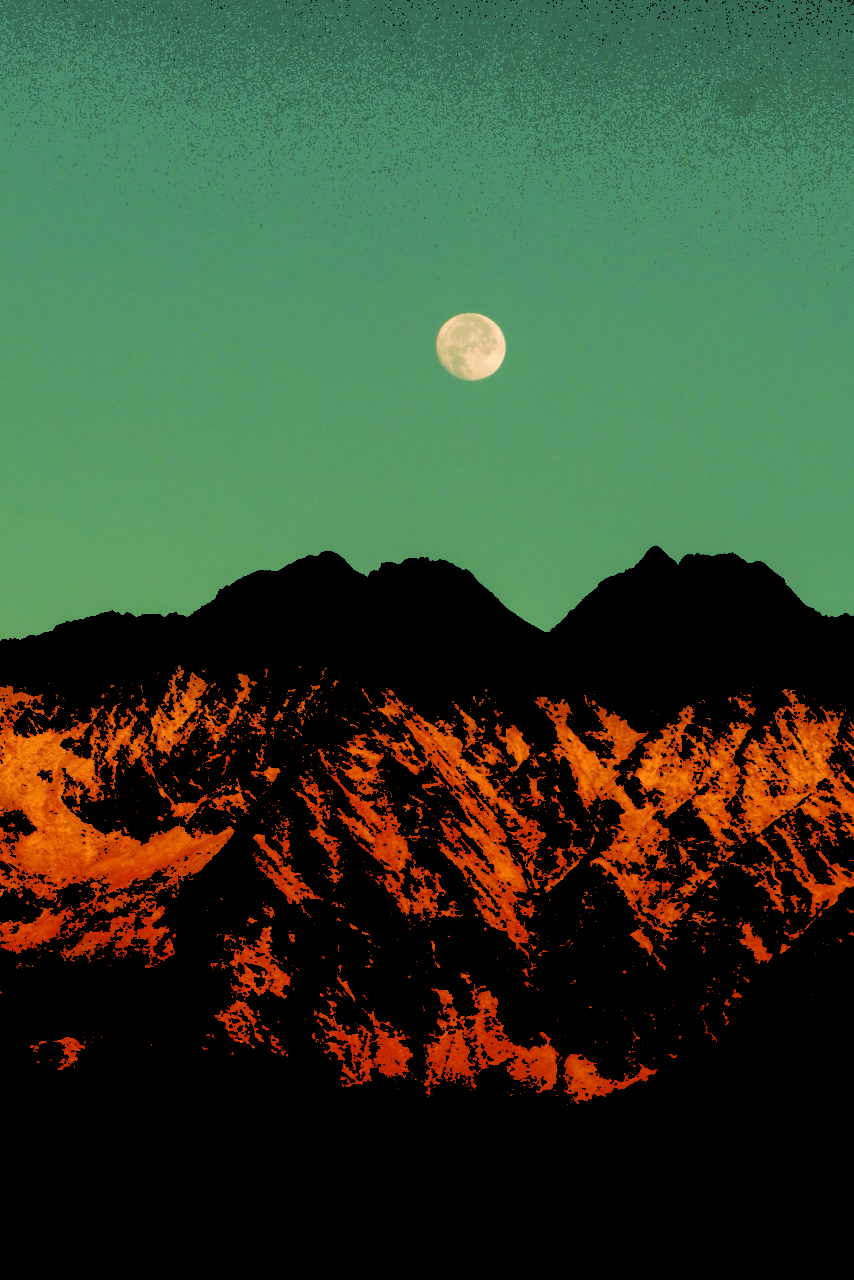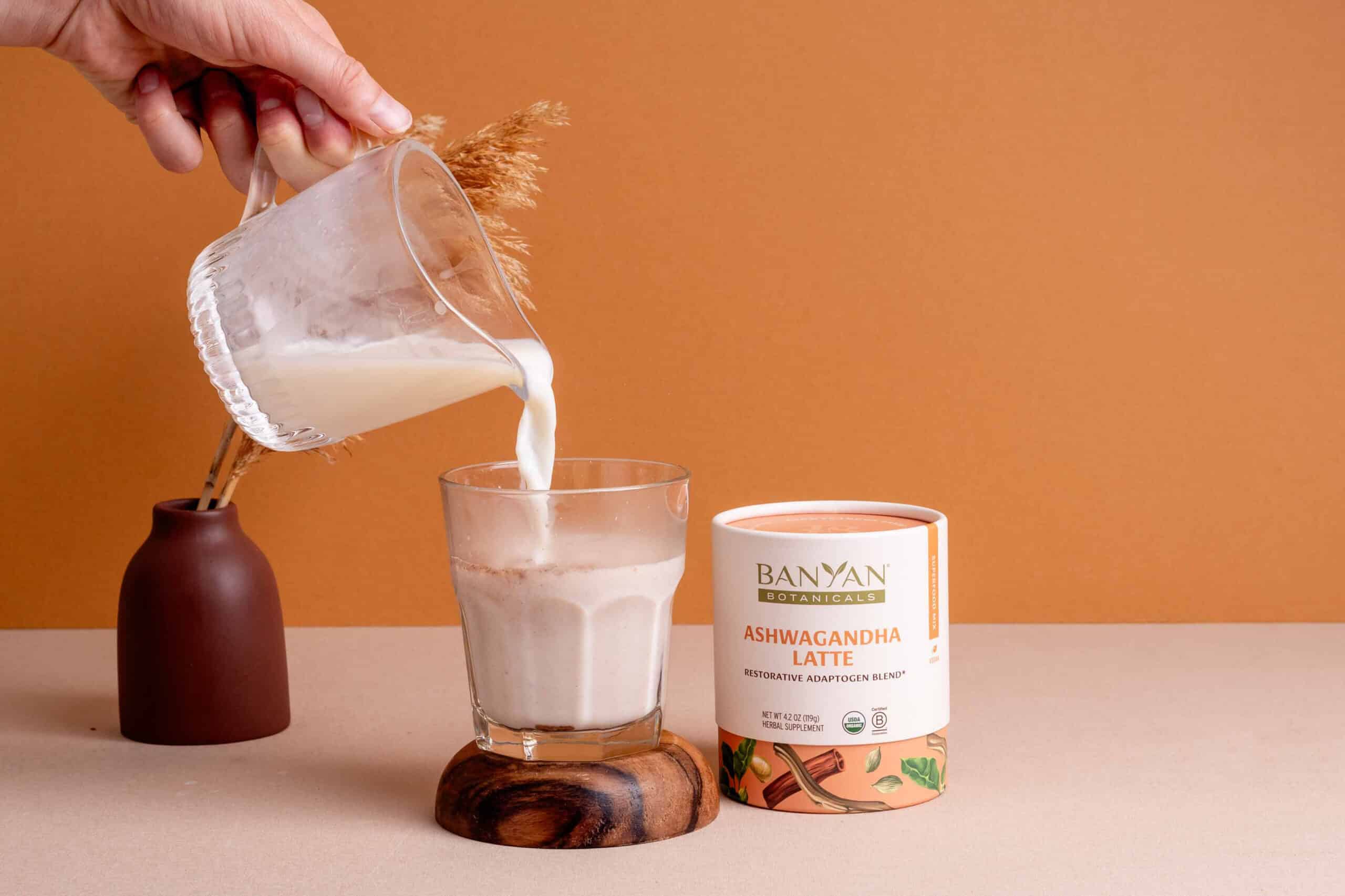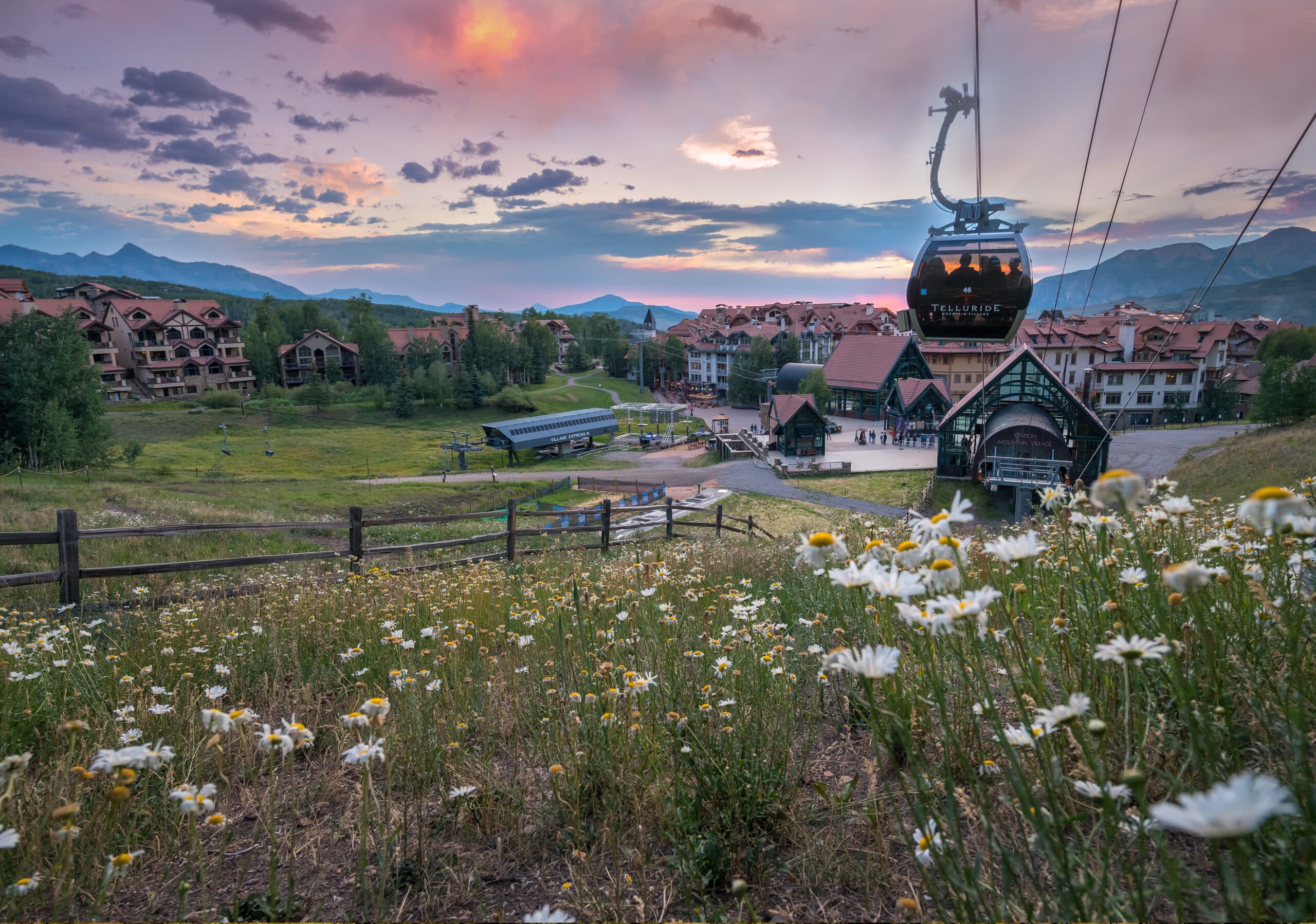Salute The Moon : A Calming Lunar Yoga Practice for Busy Times | By Julia Clarke
Lunar Flow
The sun and the moon have always been used as symbols to represent the energetic polarities of action and rest in Eastern philosophy. The sun, which rouses us from slumber and fuels us throughout the day, naturally expresses activation, intensity and dynamism, while the moon, present mostly at night when we’re at rest, epitomizes receptivity, coolness and relaxation.
These polarities can be used to describe any dynamic; if we apply them to modern life, you might say that we are living with a chronic solar imbalance where action is rewarded and rest is not even valued. We wake up early, work long days, juggle multiple obligations, exercise frantically and go to bed late. It’s no surprise that a recent Gallup poll found stress in America to be at an all-time high last year. We are overactive, overstimulated and overworked. It’s no wonder then that many of us seek out stress reduction techniques such as yoga.
Hatha yoga, the umbrella term to describe any yoga that uses physical postures (asanas) as its primary vehicle, can be translated as “sun moon” yoga, and was originally intended as a means for us to balance these opposing qualities in our bodies and minds to maintain inner equilibrium. Despite Hatha yoga’s roots as a balancing act between productivity and receptivity, contemporary yoga often errs firmly on the solar side, with dynamic and brisk Vinyasa classes being the most popular style today, often taking place in well-heated studios to further reinforce their solar impact.
The analogy of sun and moon is an effective tool for understanding how your yoga practice affects you. Dynamic standing poses, arm balances and flowing sequences like the aptly named sun salutation,a build strength and heat, require focus and determination, and push us up against our perceived limitations. Therefore, these can be described as “solar” in nature and have the benefit of leaving us feeling energized and empowered. Meanwhile, slower flows, grounding hip openers, forward bends and supported reclining postures invite introspection, cultivate patience and provide a platform for mental quietude. These can be described as “lunar” in nature and leave us feeling nourished and contemplative.
There’s plenty of scientific evidence today to suggest that incorporating a more lunar rhythm into your regular yoga practice to counter the pace and pressures of daily life is increasingly vital for your nervous system. Simple techniques to make your existing practice more lunar include slowing down the pace, simplifying the sequence, staying close to the Earth and focusing on hip openers, forward bends and slow deep breathing. These can all help to activate the relaxation response and invite your physiology into a state of rest and regeneration.
Try this lunar sequence if you’re feeling physically depleted or stressed, practicing in the evening, or in the winter months when the days are shorter and your energy tends to be lower. +
1. Earth Prayer
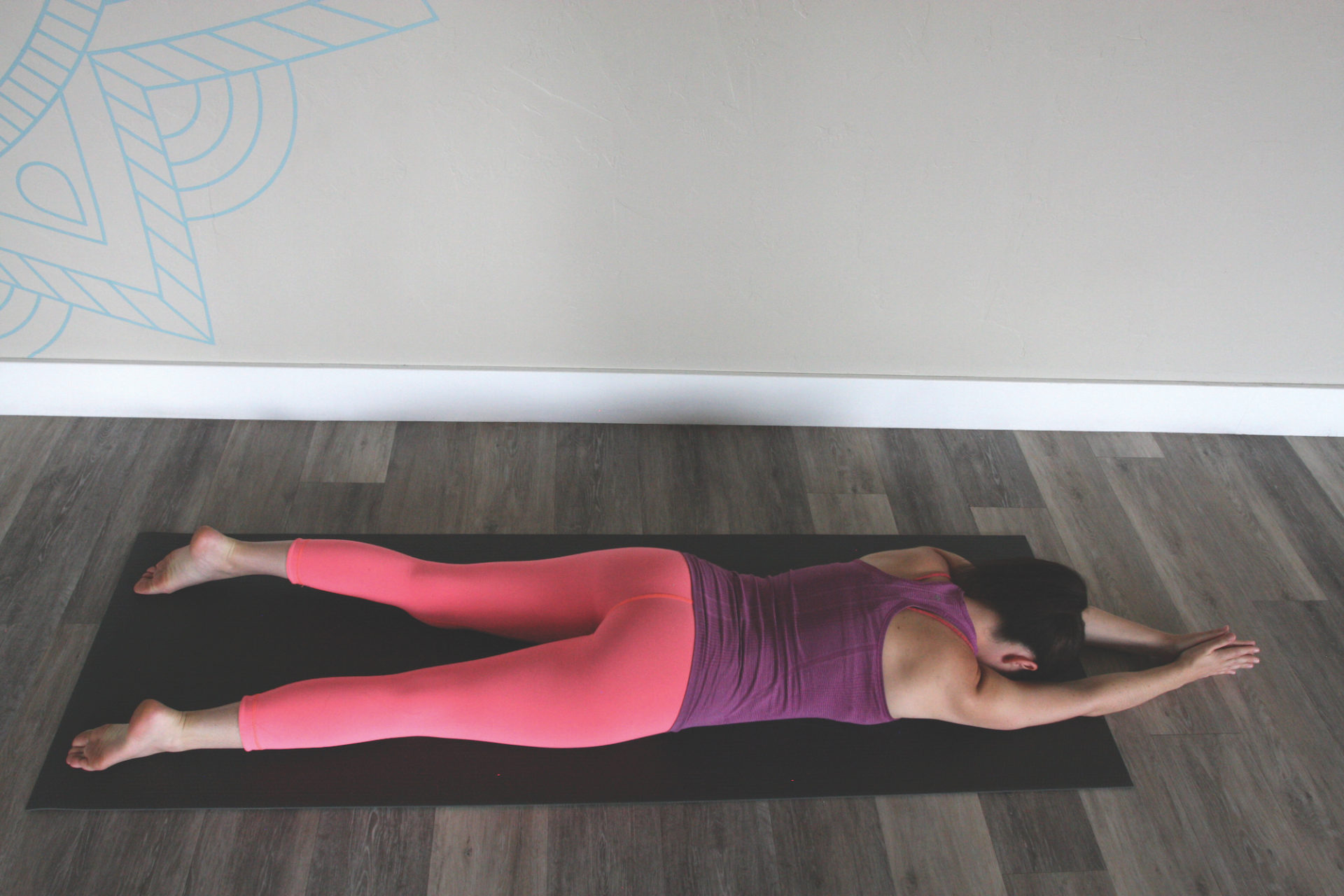
Begin by lying on your belly with your forehead on the Earth. Draw your arms up over head and bring your hands together in a prayer position. Soften the base of your spine and your glutes. Feel the weight of your body against the Earth. Imagine that you can inhale into the base of your spine, expanding your belly at the top of your inhale, and feel the softening effect of your exhale on your entire spine. Take 10 to 20 deep breaths here.
2. Low Lunge with Open Twist Flow
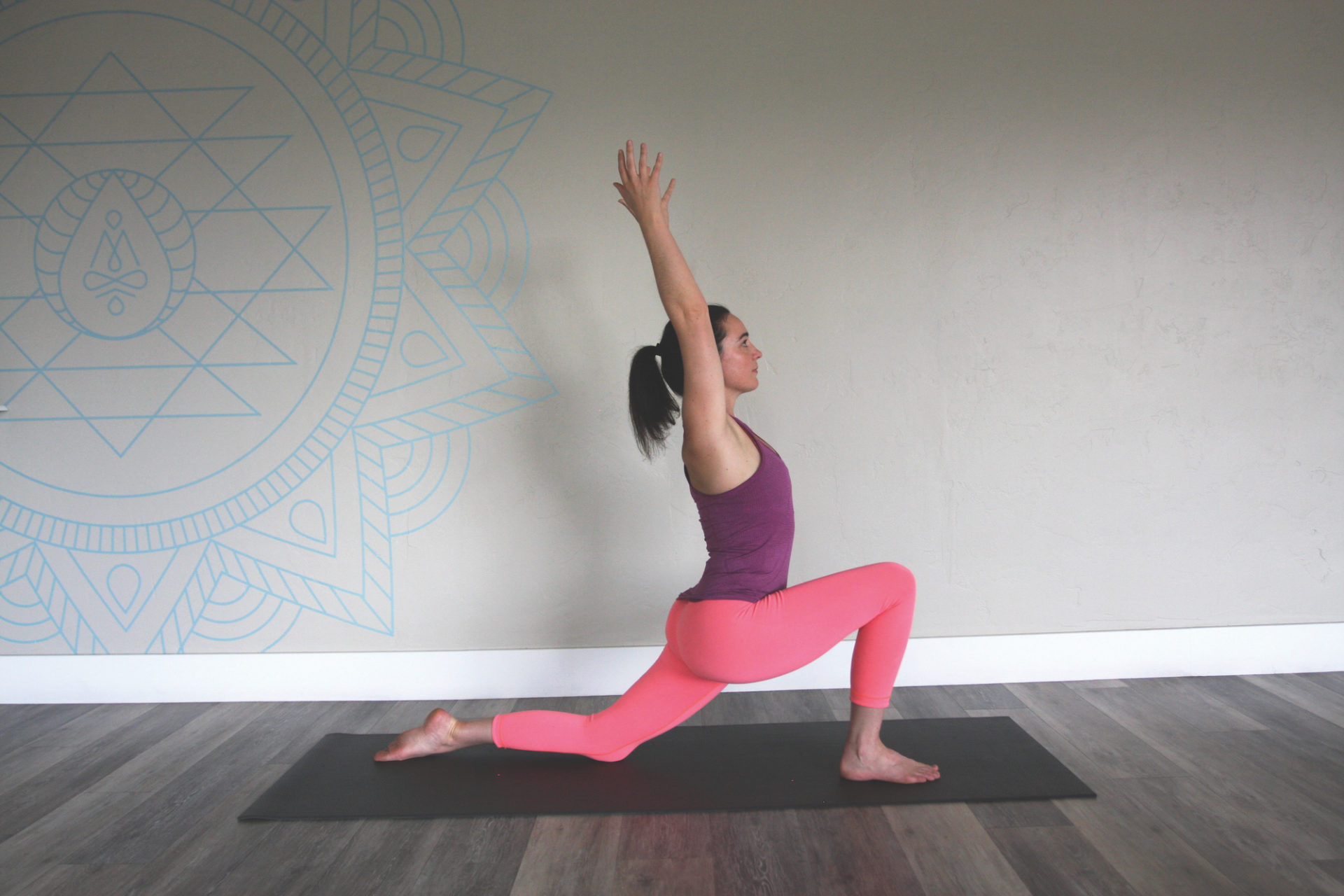
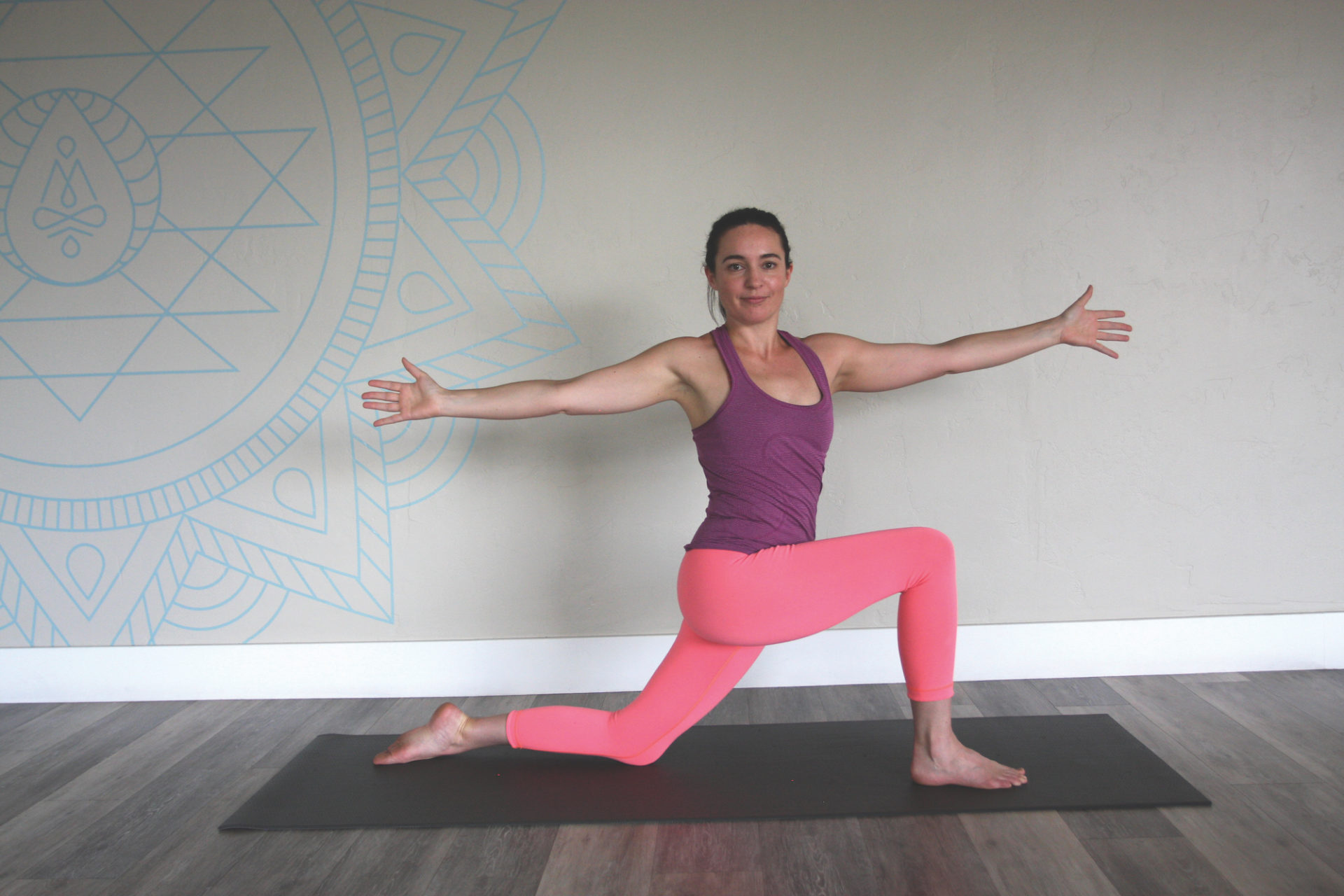
From earth prayer, press up to hands and knees or downward facing dog. Step your right foot to your right hand. Lower your left knee. Inhale reach your hands to the sky, exhale turn your navel to the right and open your arms wide in an open twist. Inhale turn back to lunge and reach your hands up, and exhale twist again. Slowly move through this three more times, and on the last twist hold for five deep breaths. Slowly cartwheel your hands down to frame your right foot.
3. Revolved Half Splits
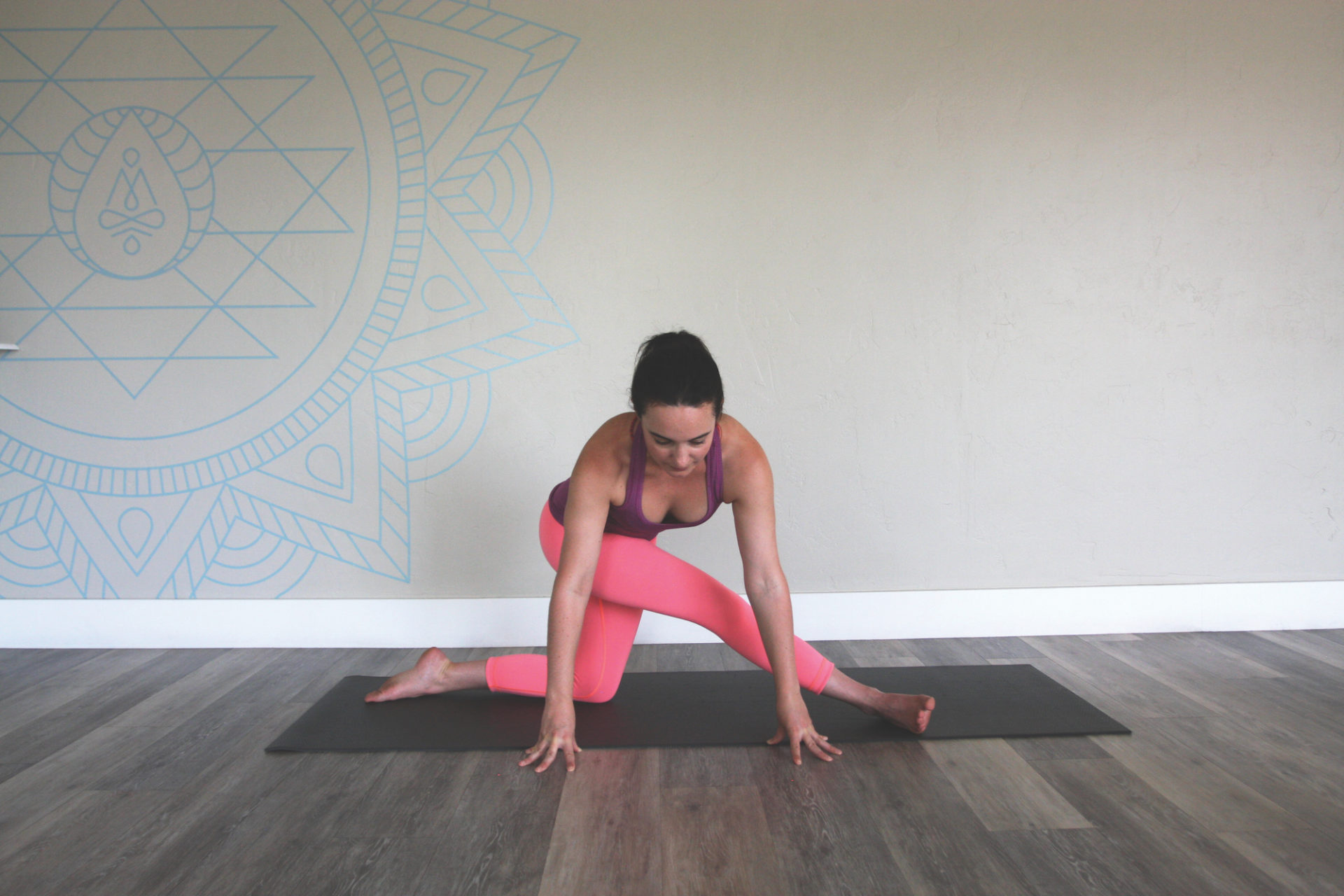
Straighten your right leg to half splits. Rock your toes from side to side for a couple of breaths, then bring your toes to the right and walk your hands around to the right side of your mat. Bend your elbows a little and unwind your neck here. After five breaths, turn back to face the front of your mat.
4. Grounded Warrior Three with Jiva Squat
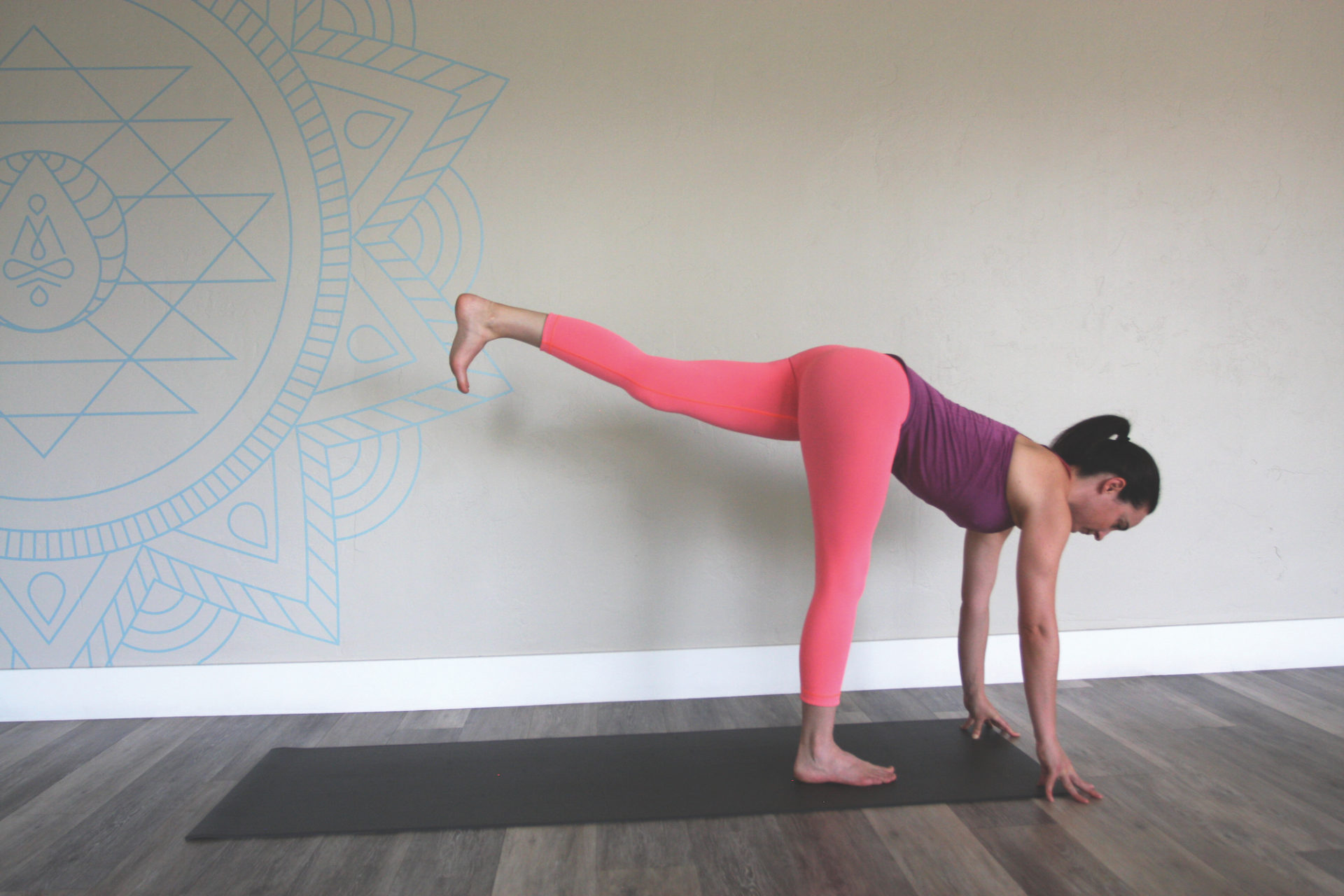
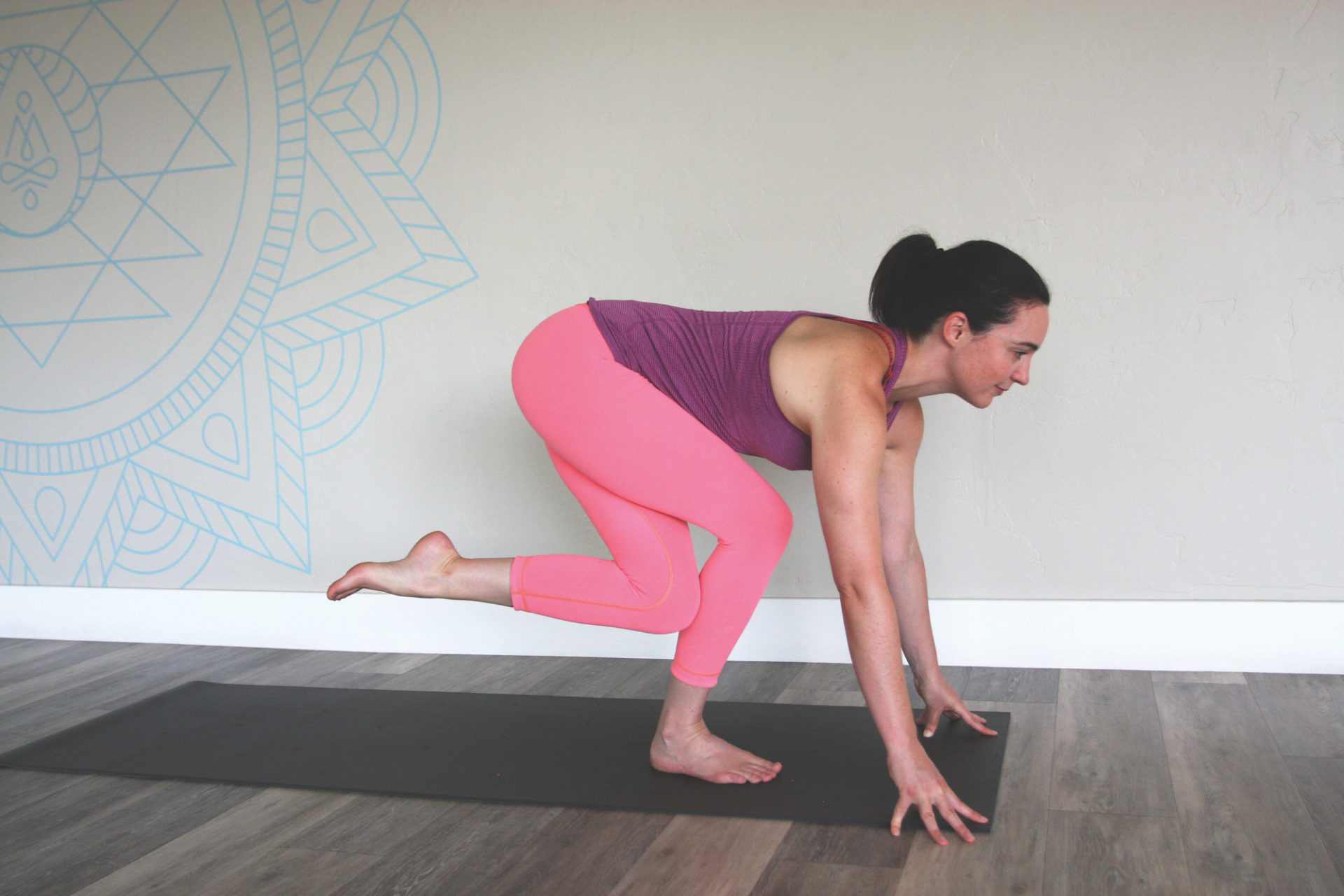
Bend your right knee, place your fingertips on the floor in front of you, and push your right foot down to float your left leg up in grounded warrior three. Inhale lengthen from your left heel to the crown of your head, exhale and bend both knees, tucking your left knee snugly behind your right knee in jiva squat. Inhale push your right foot down and float your left leg up again, exhale return to jiva squat. Repeat slowly three more times.
5. Seated Twist
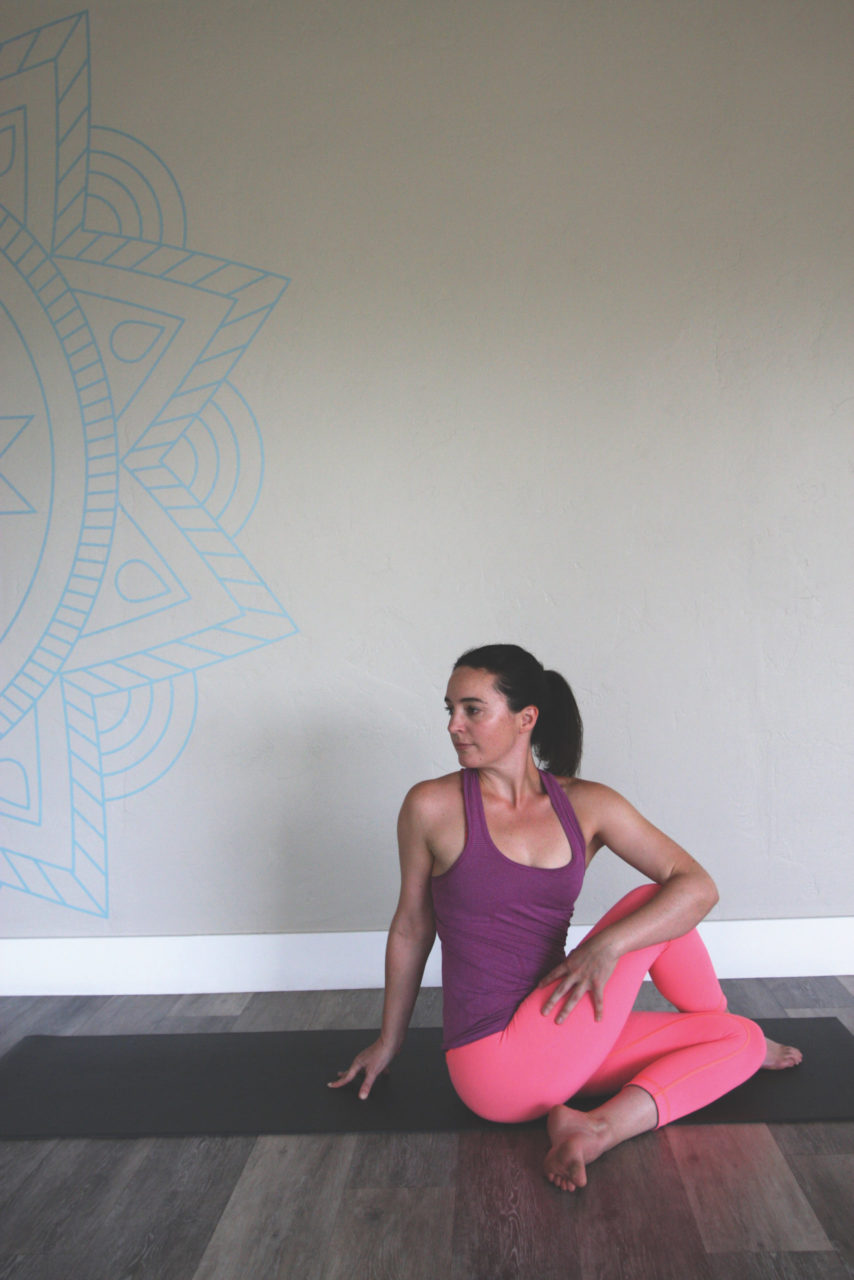
Hold your final jiva squat, then lower your left knee to the mat just outside your right foot, and sit down. Place your right fingertips just behind your sacrum and wrap your left arm around your right knee. Keeping both sitting bones heavy on the earth, inhale and lengthen your spine, exhale and gently twist your navel toward your right thigh. Take five to eight breaths here, then unwind your twist, come to hands and knees or downward facing dog, and repeat the entire sequence on your left leg.
6. Revolved Heron Pose
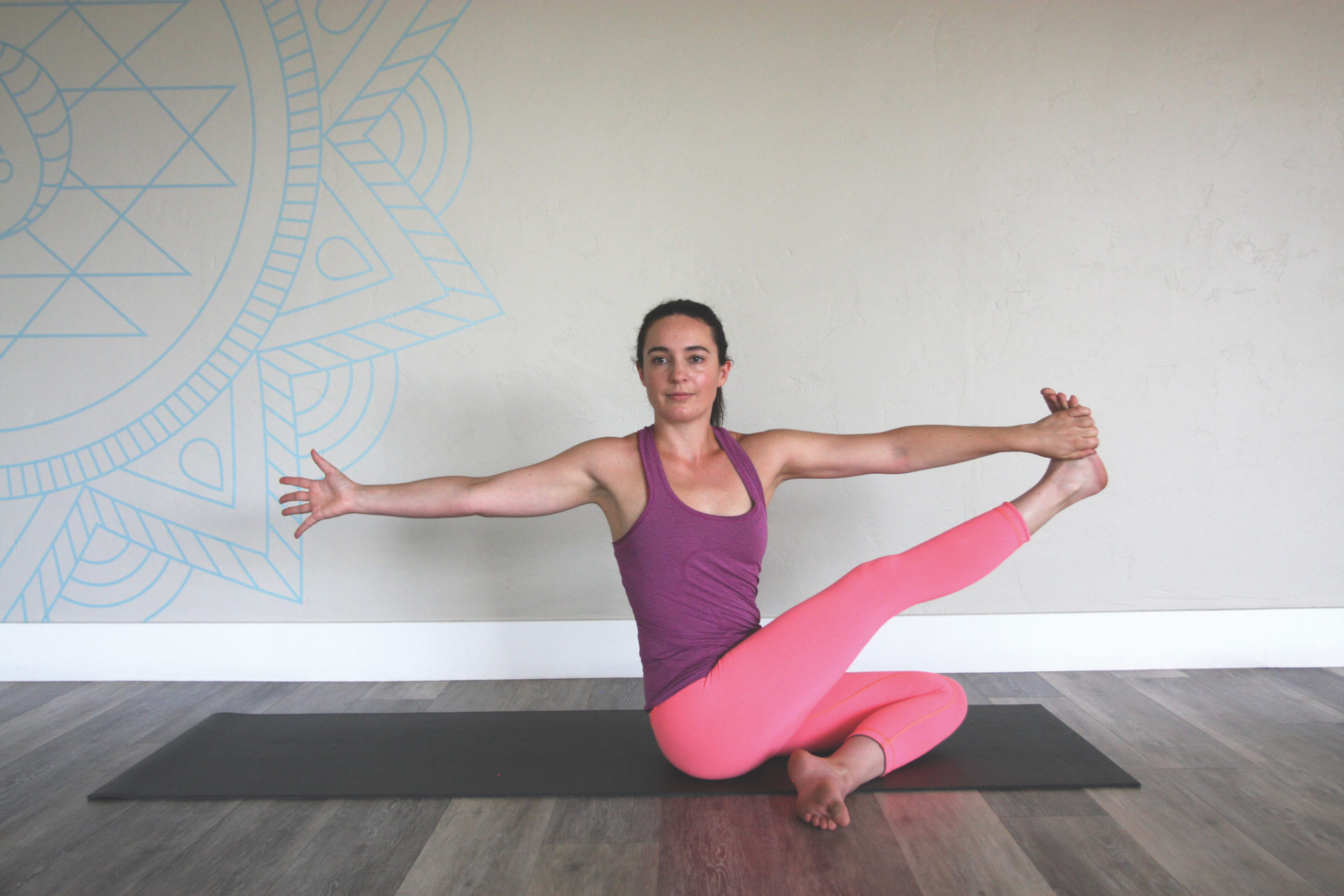
From seated twist on the left side, use both hands to pick up your left foot and straighten your left leg. Keep your spine long and draw your heart toward your knee. Hold the outside of your left foot with your right hand and taking care not to let your foot drift across midline, twist your navel and heart to the left and reach your left hand back behind you. Hold for five to eight breaths.
7. Cow Face Pose
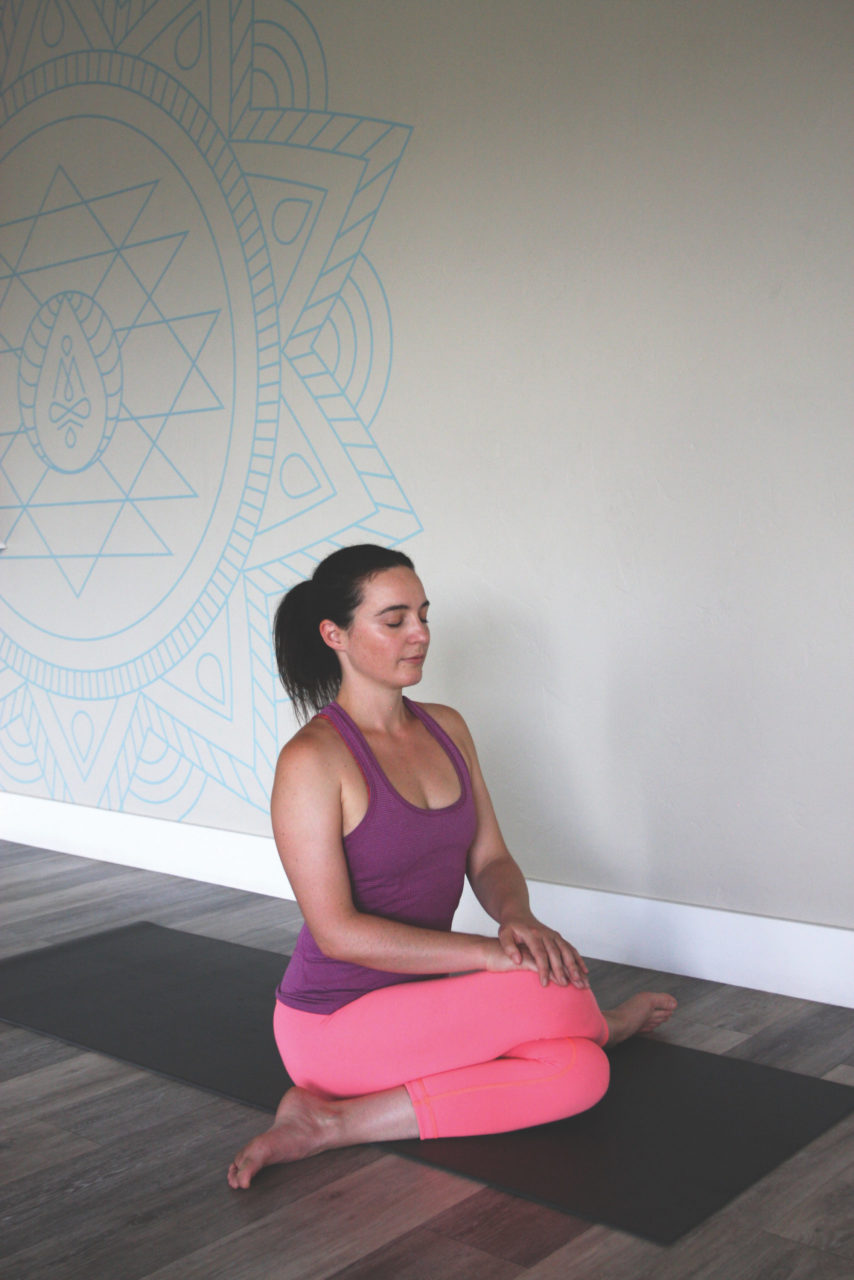
From revolver heron pose, turn forward, bend your left knee and cross your left thigh tightly over your right thigh for cow face pose. Your hips will be in external rotation with the outer edges of your feet on the earth. Sit tall and breathe deeply or bow forward and rest your head on a block. Hold for up to two minutes then uncross your legs and stretch them out before beginning on the other side with Revolved Heron Pose.
8. Windshield Wipers
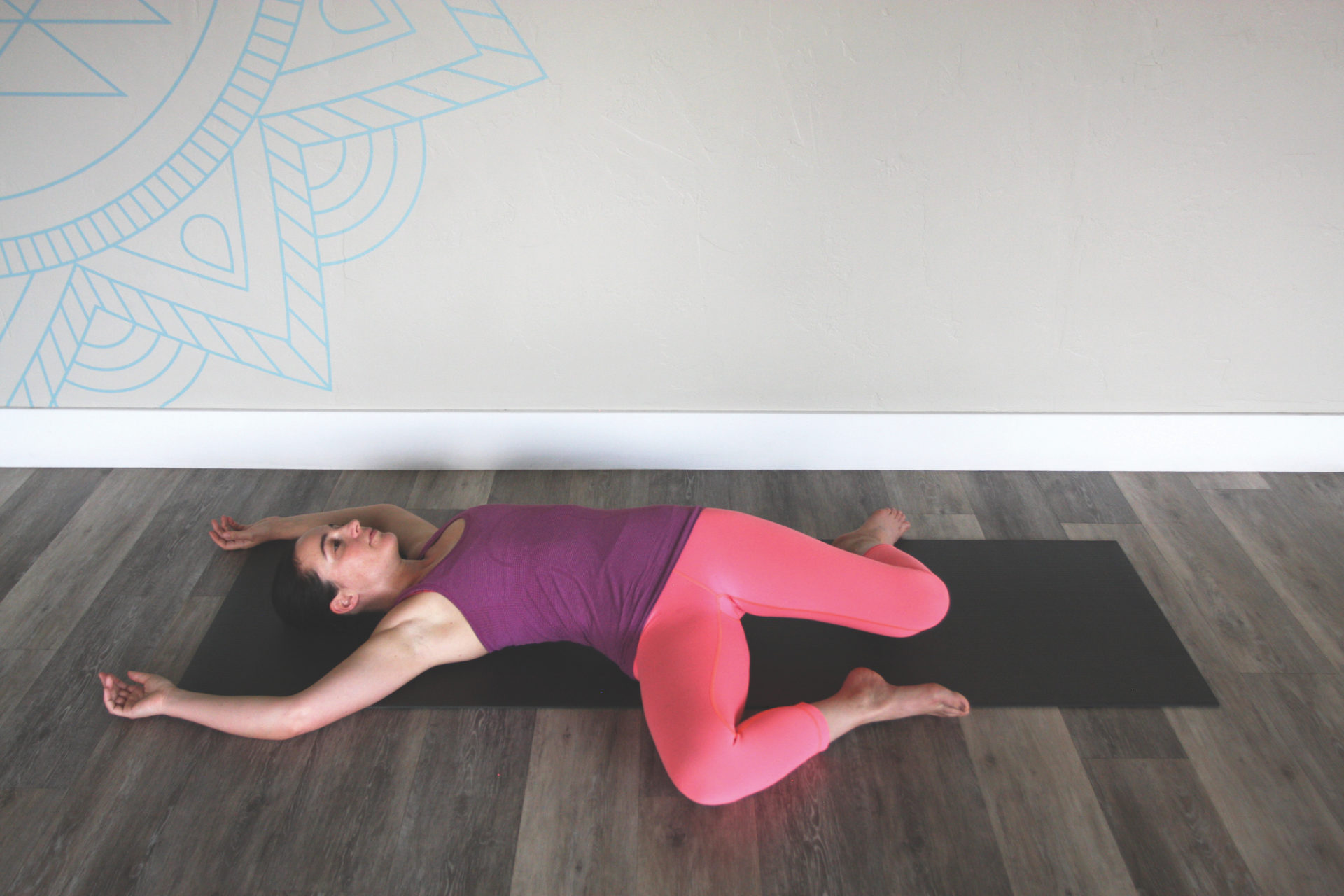
Once you’ve completed cow face pose on both sides, lie down on your back with your knees bent and your feet as wide as your mat. Slowly rock your knees from side to side like windshield wipers and let your hips and low back release.
9. Supported Bridge Pose
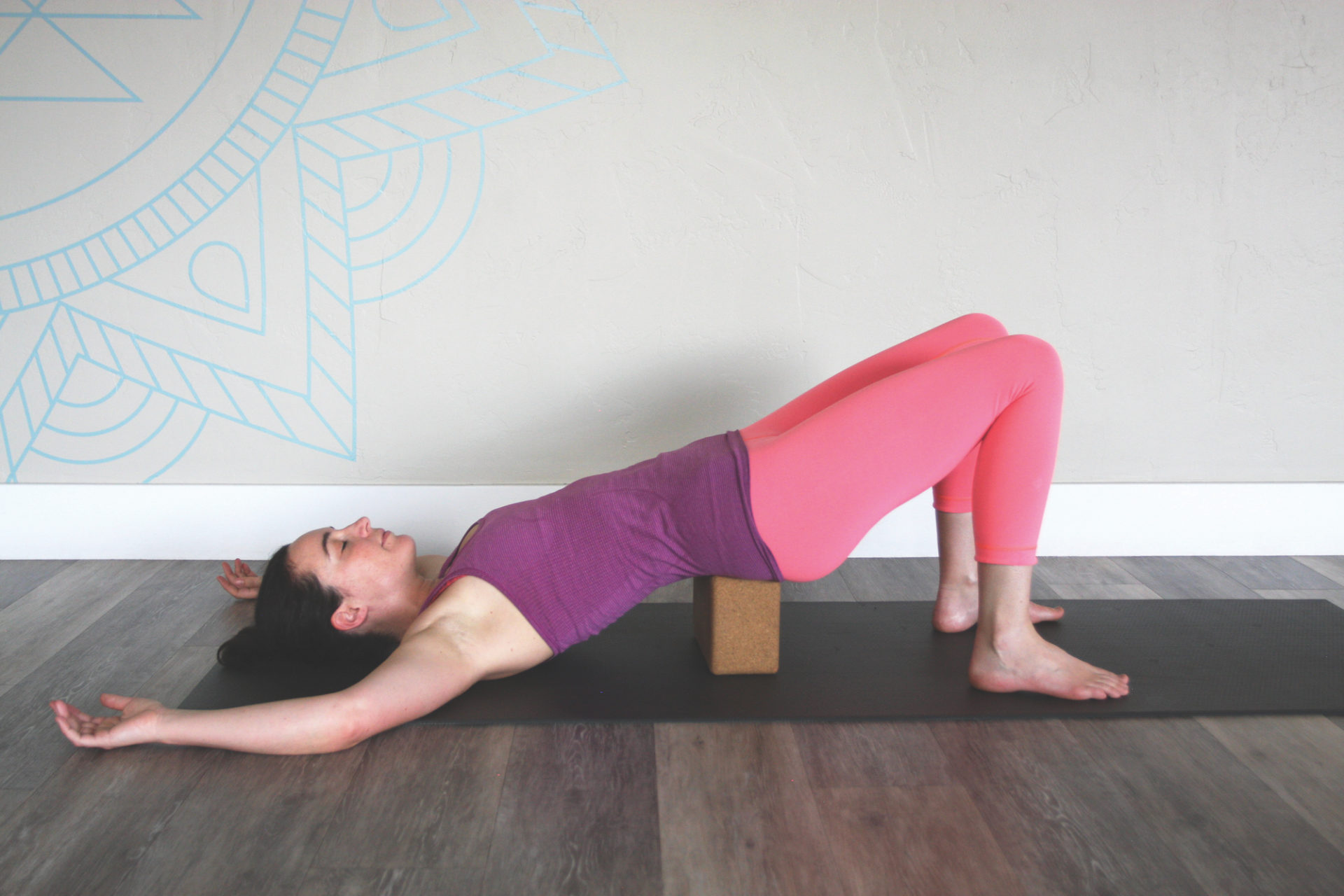
Lift your hips and place a block underneath your hips for supported bridge pose. Take your arms into cactus. Keep your knees bent or straighten your legs. Hold for two to four minutes. To come out, lift your hips and removed the block. Lower your hips down and hug your knees to your chest.
10. Reclining Bound Angle Pose with Balanced Breath
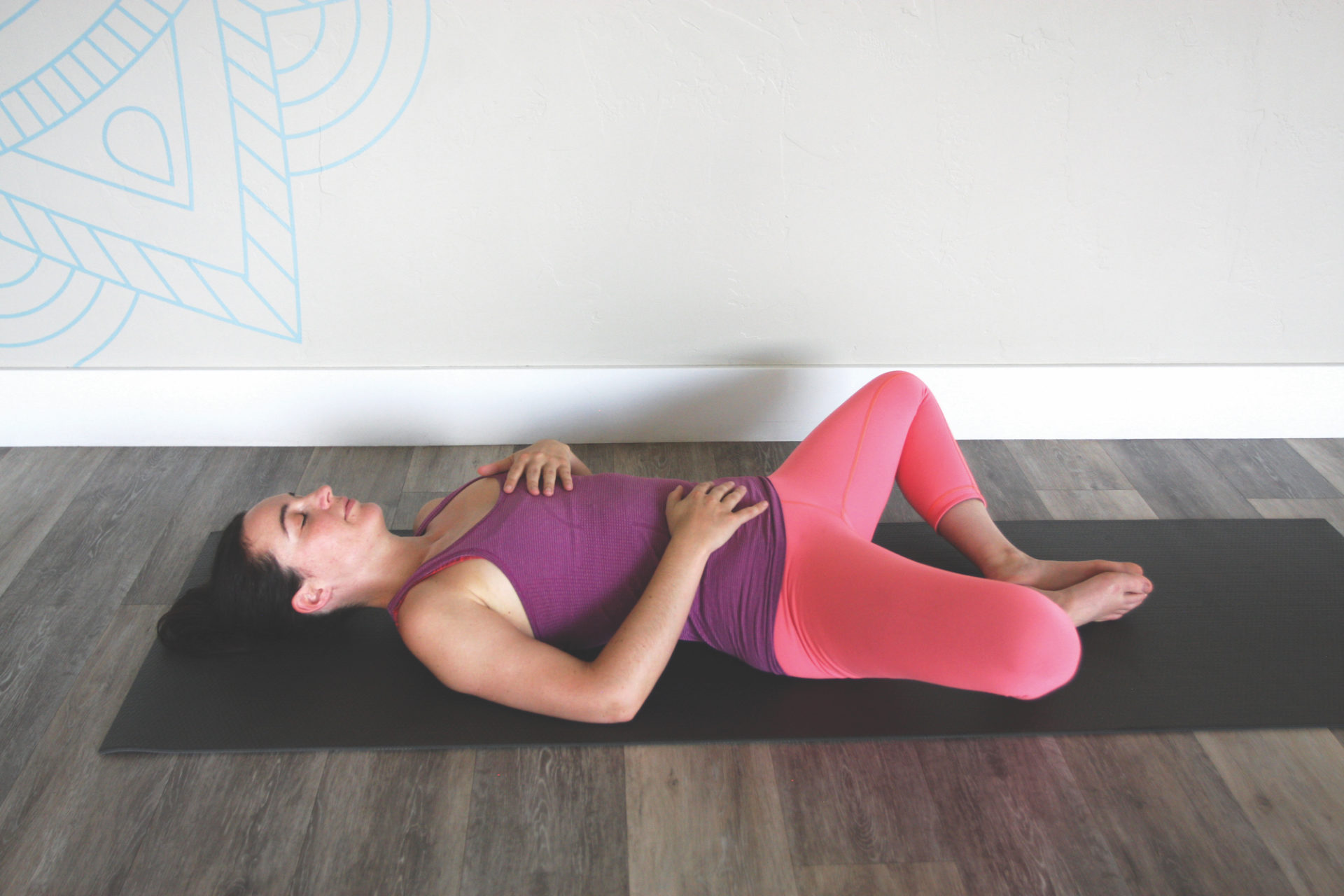
Place the soles of your feet together and open your knees wide to form a diamond shape. For added comfort, support your legs with blankets or pillows here. Place your left hand on your heart and your right hand on your belly. Bring your awareness to your breath. Begin to breath in for five seconds, and out for five seconds. Take 10 rounds of balanced breath, then return your breathing to normal. Remain in this pose for two to five minutes.
11. Supported Corpse Pose
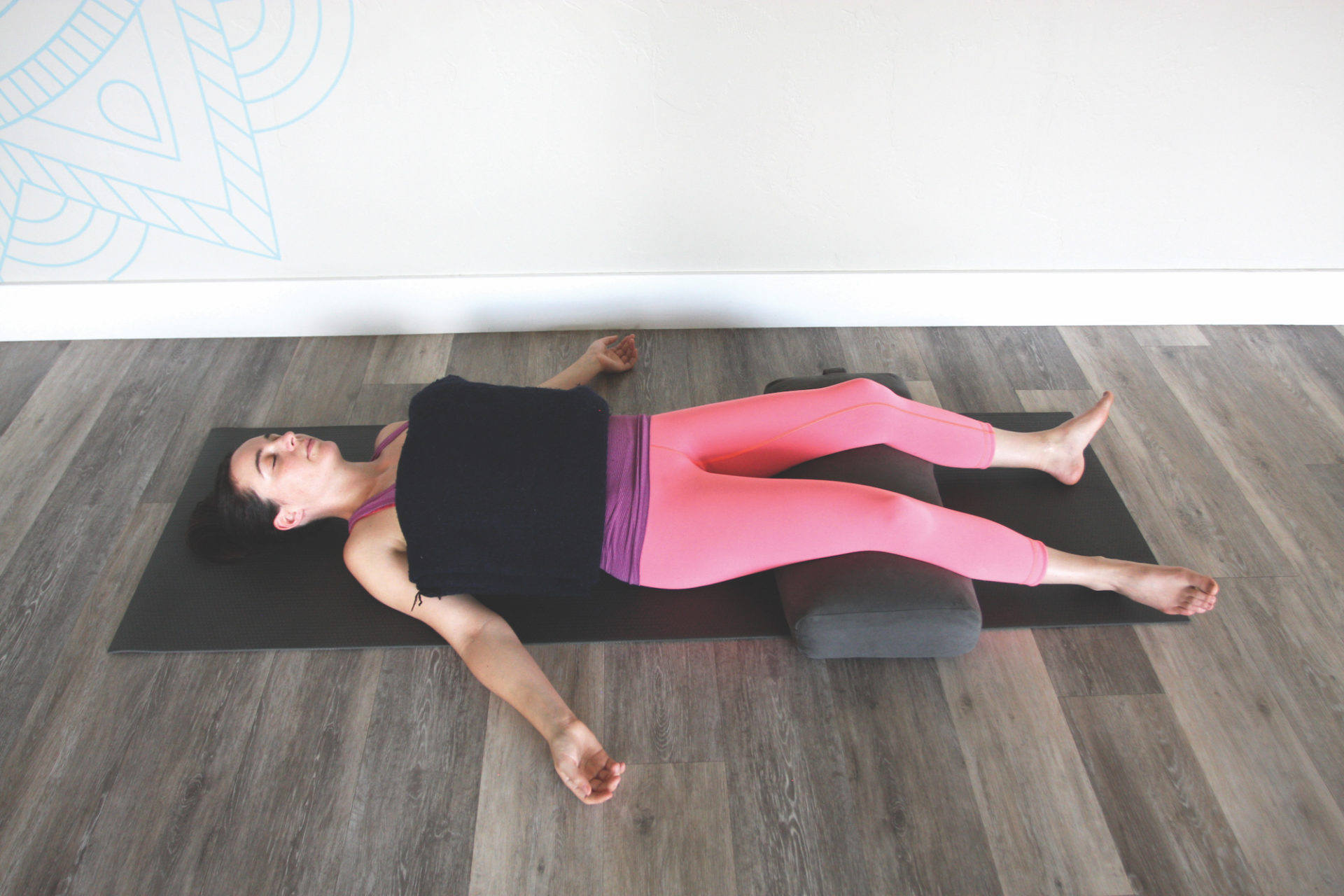
Make your final pose even more restful by placing a bolster, rolled up blanket or large pillow under your knees to help your hip flexor muscles release. Place a heavy folded blanket on your chest to help you feel even more grounded. Relax here for up to 20 minutes.
Photos by Kim Fuller.
Originally published in the Winter + Spring 2020 issue.
Flow with all the grip and none of the slip. This mat was engineered for ultimate traction in [...]

Subscribe to Our Tribe
Stay up to date with Y+L News, Events and special announcements.





